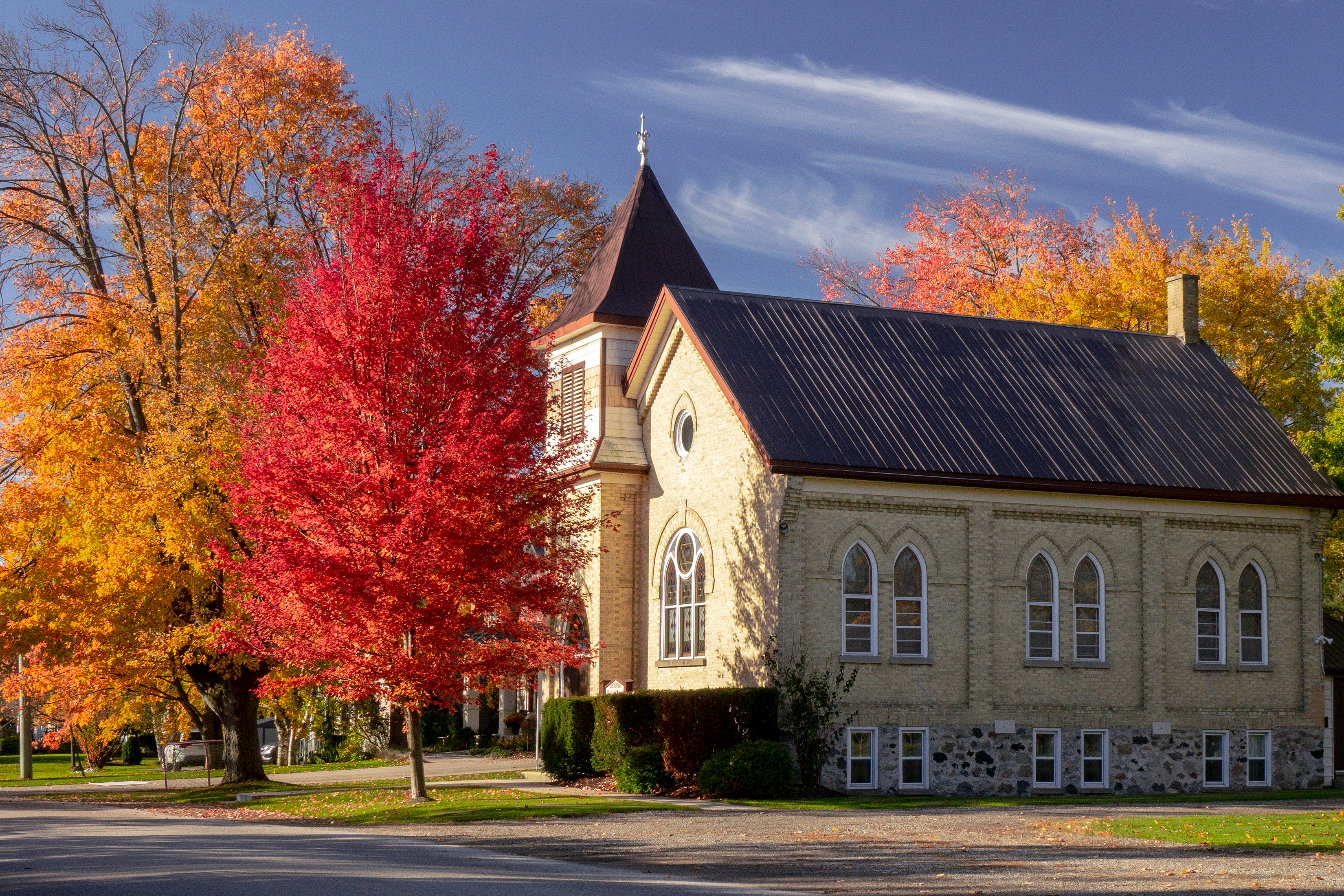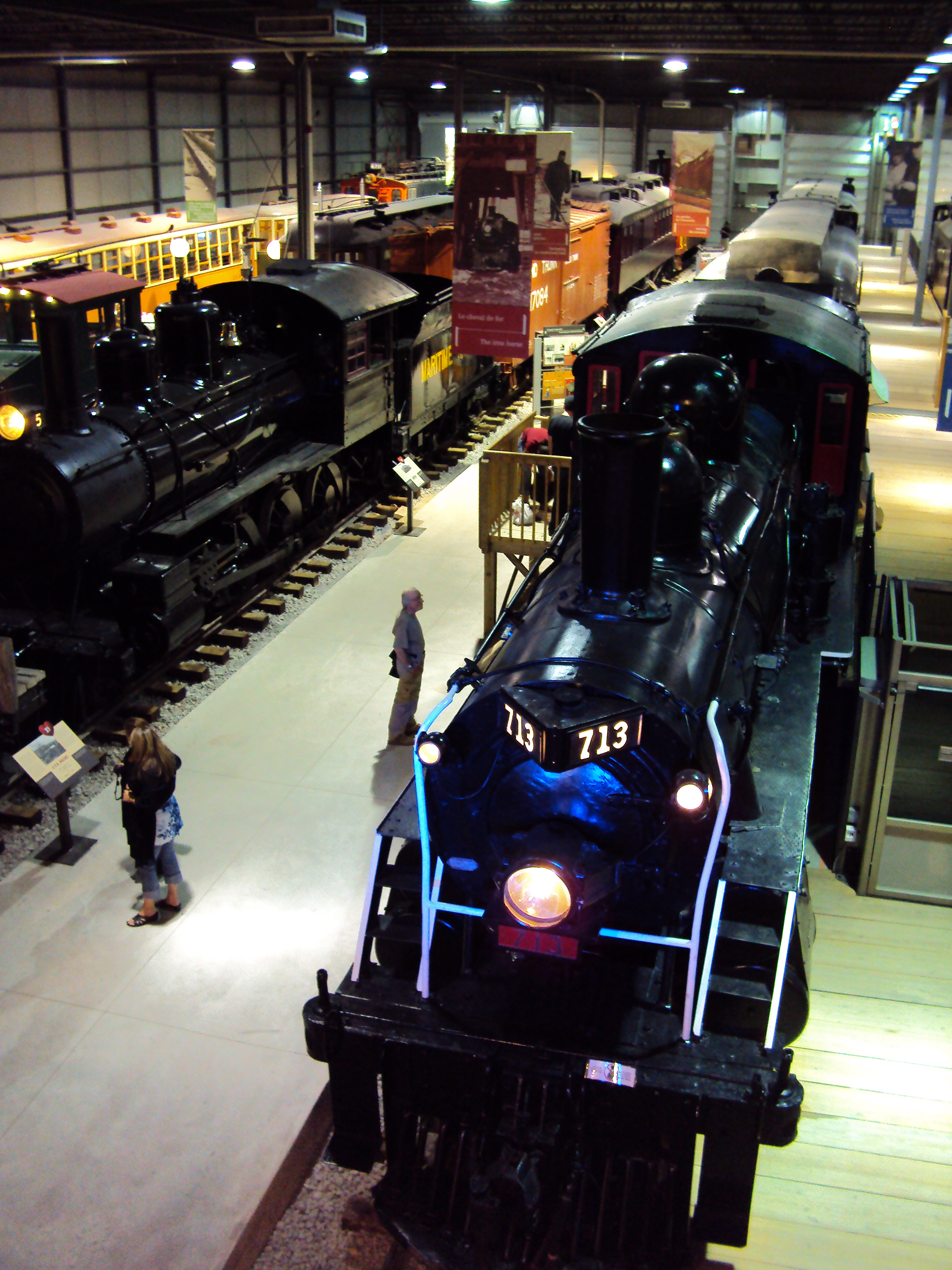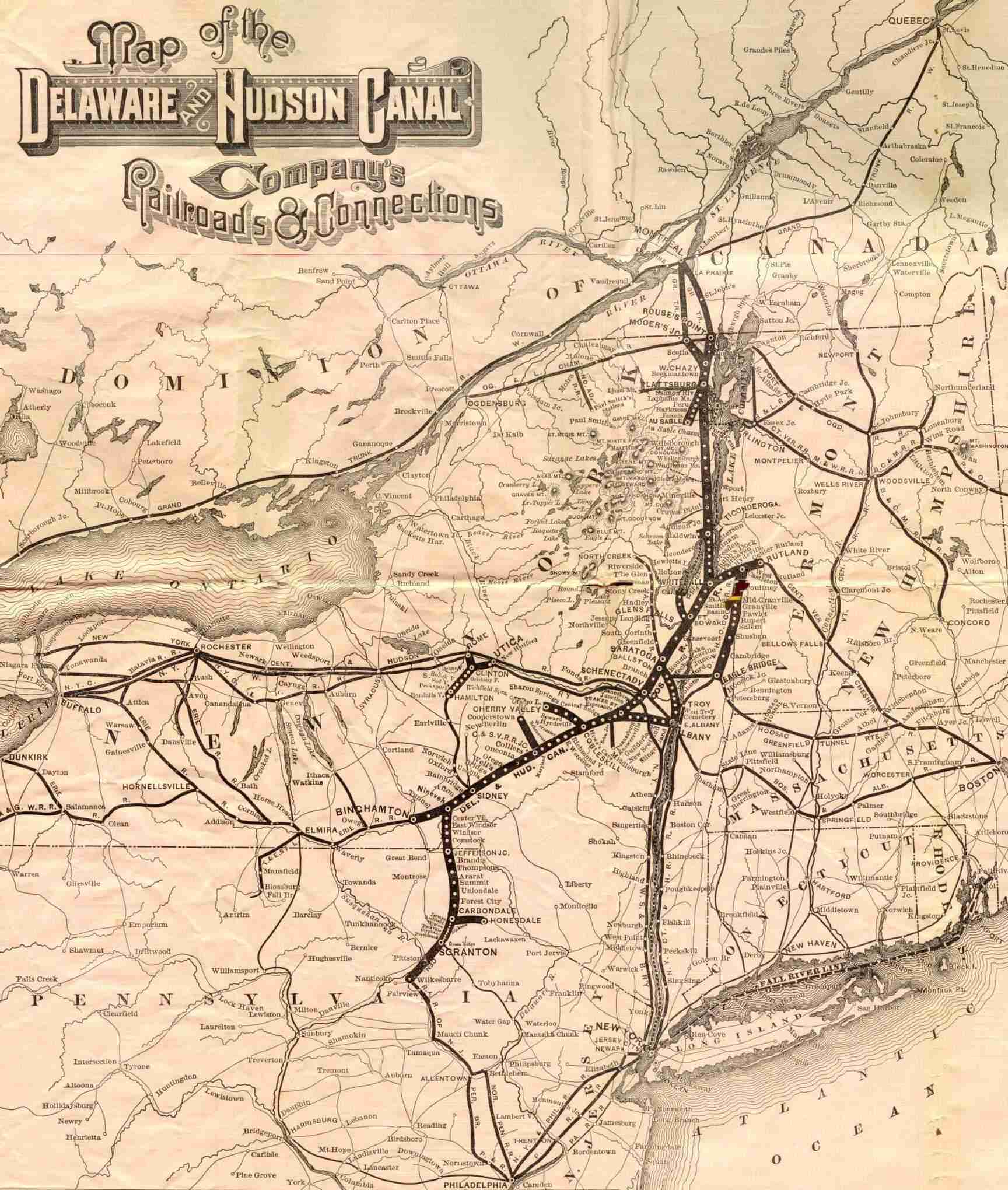|
Delson, Quebec
Delson is an off-island suburb ( South shore) of Montreal, Quebec, Canada. It is situated 8 mi/13 km SSE of Montreal within the regional county municipality of Roussillon in the administrative region of Montérégie. The population as of the Canada 2021 Census was 8,328. On its small territory, Delson is crossed by Route 132 and the Turtle River (Rivière de la Tortue). The city owns a portion of the Champlain industrial park as well as the Delson commuter train station with service to and from Montreal on the AMT's Candiac Line. History The origin of the name Delson comes from the Delaware and Hudson Railway, now a subsidiary of the Canadian Pacific Railway, which runs through the town. The Canadian Railway Museum (Exporail) occupies a large tract between Delson and Saint-Constant. Delson was founded in 1918 as a village municipality before obtaining its status of a city 21 February 1957. The village of Delson was created from three parishes: St Andrews (1924) ... [...More Info...] [...Related Items...] OR: [Wikipedia] [Google] [Baidu] |
City (Quebec)
The following is a list of the types of local and supralocal territorial units in Quebec, including those used solely for statistical purposes, as defined by the Ministry of Municipal Affairs, Regions and Land Occupancy and compiled by the Institut de la statistique du Québec. Not included are the urban agglomerations in Quebec, which, although they group together multiple municipalities, exercise only what are ordinarily local municipal powers. A list of local municipal units in Quebec by regional county municipality can be found at List of municipalities in Quebec. Local municipalities All municipalities (except cities), whether township, village, parish, or unspecified ones, are functionally and legally identical. The only difference is that the designation might serve to disambiguate between otherwise identically named municipalities, often neighbouring ones. Many such cases have had their names changed, or merged with the identically named nearby municipality since t ... [...More Info...] [...Related Items...] OR: [Wikipedia] [Google] [Baidu] |
South Shore (Montreal)
The South Shore () is the general term for the suburbs of Montreal, Quebec located on the southern shore of the Saint Lawrence River opposite the Island of Montreal. The South Shore is located within the Quebec administrative region of Montérégie. The largest city on the South Shore area is Longueuil. Territory The South Shore is not represented by any sort of regional government. This is why its territory does not correspond to precise geographic boundaries. However, in 1998, a group of researchers at the Institut national de la recherche scientifique concluded that the South Shore of Montreal consisted of four Regional County Municipalities (RCM).:INRS Urbanisation, Culture et Société. « La Rive-Sud de Montréal : Dynamique intermunicipale et intégration métropolitaine ». Montréal. Institut national de la recherche scientifique. 274 pages. * Marguerite-D'Youville (Boucherville, Varennes, Sainte-Julie, Verchères, etc.) * La Vallée-du-Richelieu (Beloeil, Chambly, McM ... [...More Info...] [...Related Items...] OR: [Wikipedia] [Google] [Baidu] |
United Church Of Canada
The United Church of Canada (french: link=no, Église unie du Canada) is a mainline Protestant denomination that is the largest Protestant Christian denomination in Canada and the second largest Canadian Christian denomination after the Catholic Church in Canada. The United Church was founded in 1925 as a merger of four Protestant denominations with a total combined membership of about 600,000 members: the Methodist Church, Canada, the Congregational Union of Ontario and Quebec, two-thirds of the congregations of the Presbyterian Church in Canada, and the Association of Local Union Churches, a movement predominantly of the Canadian Prairie provinces. The Canadian Conference of the Evangelical United Brethren Church joined the United Church of Canada on January 1, 1968. Membership peaked in 1964 at 1.1 million and has declined since that time. From 1991 to 2001, the number of people claiming an affiliation with the United Church decreased by 8%, the third largest decrease in ... [...More Info...] [...Related Items...] OR: [Wikipedia] [Google] [Baidu] |
Village Municipality (Quebec)
The following is a list of the types of local and supralocal territorial units in Quebec, including those used solely for statistical purposes, as defined by the Ministry of Municipal Affairs, Regions and Land Occupancy and compiled by the Institut de la statistique du Québec. Not included are the urban agglomerations in Quebec, which, although they group together multiple municipalities, exercise only what are ordinarily local municipal powers. A list of local municipal units in Quebec by regional county municipality can be found at List of municipalities in Quebec. Local municipalities All municipalities (except cities), whether township, village, parish, or unspecified ones, are functionally and legally identical. The only difference is that the designation might serve to disambiguate between otherwise identically named municipalities, often neighbouring ones. Many such cases have had their names changed, or merged with the identically named nearby municipality sinc ... [...More Info...] [...Related Items...] OR: [Wikipedia] [Google] [Baidu] |
Saint-Constant, Quebec
Saint-Constant is a city in southwestern Quebec, Canada. It is located on the south shore of Montreal in the Roussillon Regional County Municipality of the Montérégie region. The population as of the Canada 2016 Census was 27,359. History Early settlement took place in 1725 as a result of the opening of the St. Pierre concession. The Côte Saint-Pierre mission (first name of the parish) began in 1750 with the construction of a church and two years later, the parish registers opened. Rang Saint-Pierre was the central concession of the Sault-Saint-Louis seigneurie and extended into the seigneurie of LaSalle. In 1815 Rang Saint-Pierre was nicknamed "Black Cattle Road" because it was the way cattle were transported from New York to Montreal. Centrally located in what was then Laprairie County, the village of Saint-Constant was the only location of voting from 1829 to 1841. Residents of the area witnessed or took part in the Lower Canada Rebellion of 1837-1838. Local administrativ ... [...More Info...] [...Related Items...] OR: [Wikipedia] [Google] [Baidu] |
Canadian Railway Museum
The Canadian Railway Museum (french: (Le) ''Musée ferroviaire canadien''), operating under the brand name Exporail in both official languages, is a rail transport museum in Saint-Constant, Quebec, Canada, on Montreal's south shore. Locomotives Diesel Locomotives http://collections.exporail.org/emfc/#browse=enarratives.59 Collection Established in 1961 by its owner and operator, the Canadian Railroad Historical Association, the museum maintains the largest collection of railway equipment in Canada with over 140 pieces of rolling stock. There are also over 250,000 objects and documents from Canada's railway history in the collection which is maintained in the archives on the property. The museum operates a heritage streetcar line around the grounds as well as a heritage railway which pulls a small passenger train on a former freight spur to Montée des Bouleaux. The streetcar operates daily during the spring, summer and fall while the railway operates every Sunday during ... [...More Info...] [...Related Items...] OR: [Wikipedia] [Google] [Baidu] |
Canadian Pacific Railway
The Canadian Pacific Railway (french: Chemin de fer Canadien Pacifique) , also known simply as CPR or Canadian Pacific and formerly as CP Rail (1968–1996), is a Canadian Class I railway incorporated in 1881. The railway is owned by Canadian Pacific Railway Limited, which began operations as legal owner in a corporate restructuring in 2001. Headquartered in Calgary, Alberta, the railway owns approximately of track in seven provinces of Canada and into the United States, stretching from Montreal to Vancouver, and as far north as Edmonton. Its rail network also serves Minneapolis–St. Paul, Milwaukee, Detroit, Chicago, and Albany, New York, in the United States. The railway was first built between eastern Canada and British Columbia between 1881 and 1885 (connecting with Ottawa Valley and Georgian Bay area lines built earlier), fulfilling a commitment extended to British Columbia when it entered Confederation in 1871; the CPR was Canada's first transcontinental railway ... [...More Info...] [...Related Items...] OR: [Wikipedia] [Google] [Baidu] |
Delaware And Hudson Railway
The Delaware and Hudson Railway (D&H) is a railroad that operates in the Northeastern United States. In 1991, after more than 150 years as an independent railroad, the D&H was purchased by the Canadian Pacific Railway (CP). CP operates D&H under its subsidiary Soo Line Corporation which also operates Soo Line Railroad. D&H's name originates from the 1823 New York state corporation charter listing "The President, Managers and Company of the Delaware & Hudson Canal Co." authorizing an establishment of "water communication" between the Delaware River and the Hudson River. Nicknamed "The Bridge Line to New England and Canada," D&H connected New York with Montreal, Quebec and New England. D&H has also been known as "North America's oldest continually operated transportation company." On September 19, 2015, the Norfolk Southern Railway completed acquisition of the D&H South Line from CP. The D&H South Line is 282 miles (454 kilometers) long and connects Schenectady, New York, t ... [...More Info...] [...Related Items...] OR: [Wikipedia] [Google] [Baidu] |
Candiac Line (AMT)
Candiac (also designated exo4, formerly known as Delson-Candiac) is a commuter railway line in Greater Montreal, Quebec, Canada. It is operated by Exo, the organization that operates public transport services across this region. The Candiac line was originally operated by the Canadian Pacific Railway (CPR) as part of its ''South-Eastern railway line'' between Windsor Station and Farnham from 1887 until 1980. The former AMT resumed passenger service on this line in 2001, while Exo assumed current service on June 1, 2017. There are nine inbound and nine outbound trains each weekday. Overview This line links the Lucien-L'Allier station in downtown Montreal with Candiac, on Montreal's South Shore. The line offers nine departures every weekday towards Montreal and nine return trips to Candiac every weekday. Most departures are during rush hour, but three are offered during off-peak hours in each direction. History AMT service The former Agence Métropolitaine de Transport (A ... [...More Info...] [...Related Items...] OR: [Wikipedia] [Google] [Baidu] |
Commuter Rail In North America
Commuter rail services in the United States, Canada, Cuba, Mexico, Panama, and Costa Rica provide common carrier passenger transportation along railway tracks, with scheduled service on fixed routes on a non-reservation basis, primarily for short-distance (local) travel between a central business district and adjacent suburbs and regional travel between cities of a conurbation. It does ''not'' include rapid transit or light rail service. Services Many, but not all, newer commuter railways offer service during peak times only, with trains into the central business district during morning rush hour and returning to the outer areas during the evening rush hour. This mode of operation is, in many cases, simplified by ending the train with a special passenger carriage (referred to as a cab car), which has an operating cab and can control the locomotive remotely, to avoid having to turn the train around at each end of its route. Other systems avoid the problem entirely by using bi-d ... [...More Info...] [...Related Items...] OR: [Wikipedia] [Google] [Baidu] |
Quebec Route 132
Route 132 is the longest highway in Quebec. It follows the south shore of the Saint Lawrence River from the border with the state of New York in the hamlet of Dundee (connecting with New York State Route 37 (NY 37) via NY 970T, an unsigned reference route, north of Massena), west of Montreal to the Gulf of Saint Lawrence and circles the Gaspé Peninsula. This highway is known as the Navigator's Route. It passes through the Montérégie, Centre-du-Québec, Chaudière-Appalaches, Bas-Saint-Laurent and Gaspésie regions of the province. Unlike the more direct Autoroute 20, which it shadows from Longueuil to Sainte-Luce, Route 132 takes a more scenic route which goes through many historic small towns. Until the connection between Rivière-du-Loup and Rimouski is completed, this highway provides a link between the two sections of Autoroute 20. At Rivière-du-Loup, the Trans-Canada Highway continues south on Autoroute 85 to Edmundston, New Brunswick. This ... [...More Info...] [...Related Items...] OR: [Wikipedia] [Google] [Baidu] |





